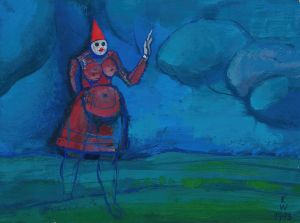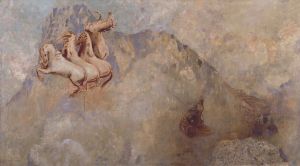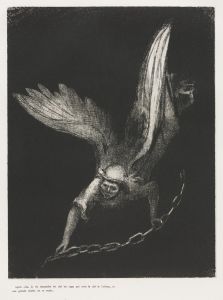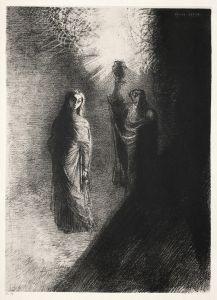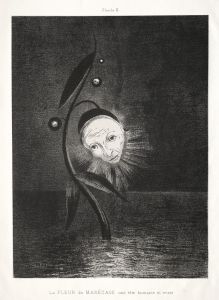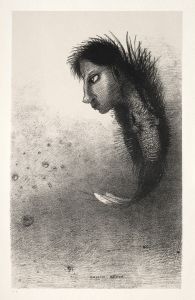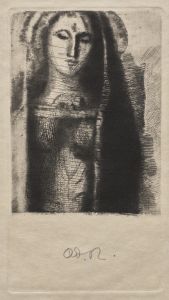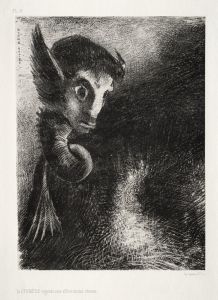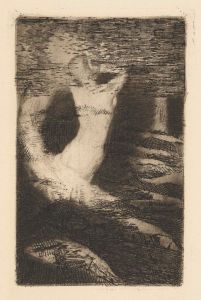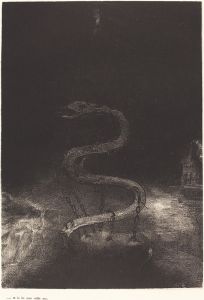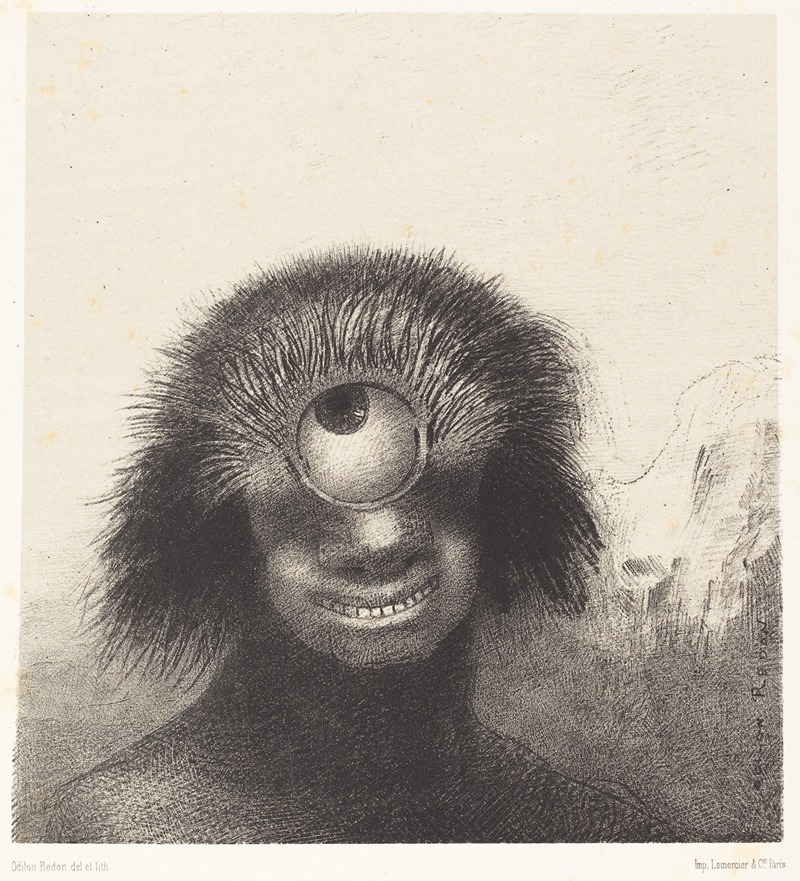
Le Polype difforme flottait sur les rivages, sorte de cyclope souriant et hideux
A hand-painted replica of Odilon Redon’s masterpiece Le Polype difforme flottait sur les rivages, sorte de cyclope souriant et hideux, meticulously crafted by professional artists to capture the true essence of the original. Each piece is created with museum-quality canvas and rare mineral pigments, carefully painted by experienced artists with delicate brushstrokes and rich, layered colors to perfectly recreate the texture of the original artwork. Unlike machine-printed reproductions, this hand-painted version brings the painting to life, infused with the artist’s emotions and skill in every stroke. Whether for personal collection or home decoration, it instantly elevates the artistic atmosphere of any space.
Odilon Redon (1840–1916) was a French Symbolist artist known for his enigmatic and dreamlike works that often explored themes of imagination, spirituality, and the subconscious. Among his many creations, the artwork titled Le Polype difforme flottait sur les rivages, sorte de cyclope souriant et hideux (translated as The Deformed Polyp Floated Along the Shores, a Kind of Smiling and Hideous Cyclops) is a notable example of his fascination with the strange and the grotesque.
This piece is part of Redon’s series of noirs, a collection of black-and-white works created using charcoal and lithography. These works, produced primarily in the late 19th century, are characterized by their monochromatic palette and surreal, often unsettling imagery. The title of this particular work reflects Redon’s tendency to pair his visual creations with evocative, poetic titles that enhance their mysterious and otherworldly quality.
The artwork depicts a surreal, amorphous creature resembling a polyp—a simple aquatic organism—floating near a shoreline. The creature is described in the title as a "smiling and hideous cyclops," suggesting a single, prominent eye and an unsettling grin. This combination of grotesque and whimsical elements is typical of Redon’s artistic approach, which sought to evoke emotions and provoke thought rather than adhere to conventional representations of reality.
Redon’s interest in such imagery was influenced by a variety of sources, including literature, science, and philosophy. He was particularly inspired by the writings of Edgar Allan Poe, whose tales of mystery and the macabre resonated with Redon’s artistic sensibilities. Additionally, the scientific discoveries of his time, such as the study of microscopic organisms and marine life, may have informed the organic, otherworldly forms seen in his work.
Le Polype difforme flottait sur les rivages exemplifies Redon’s ability to blend the real and the imaginary, creating a visual language that defies easy interpretation. The work invites viewers to confront the unknown and to explore the boundaries between beauty and monstrosity. It also reflects the broader Symbolist movement’s emphasis on subjective experience and the exploration of inner worlds.
While the exact date of this piece’s creation is not specified, it aligns with the broader themes and techniques that defined Redon’s artistic output during the late 19th century. Today, Redon’s works, including this one, are celebrated for their innovative approach to art and their enduring ability to captivate and intrigue audiences.





